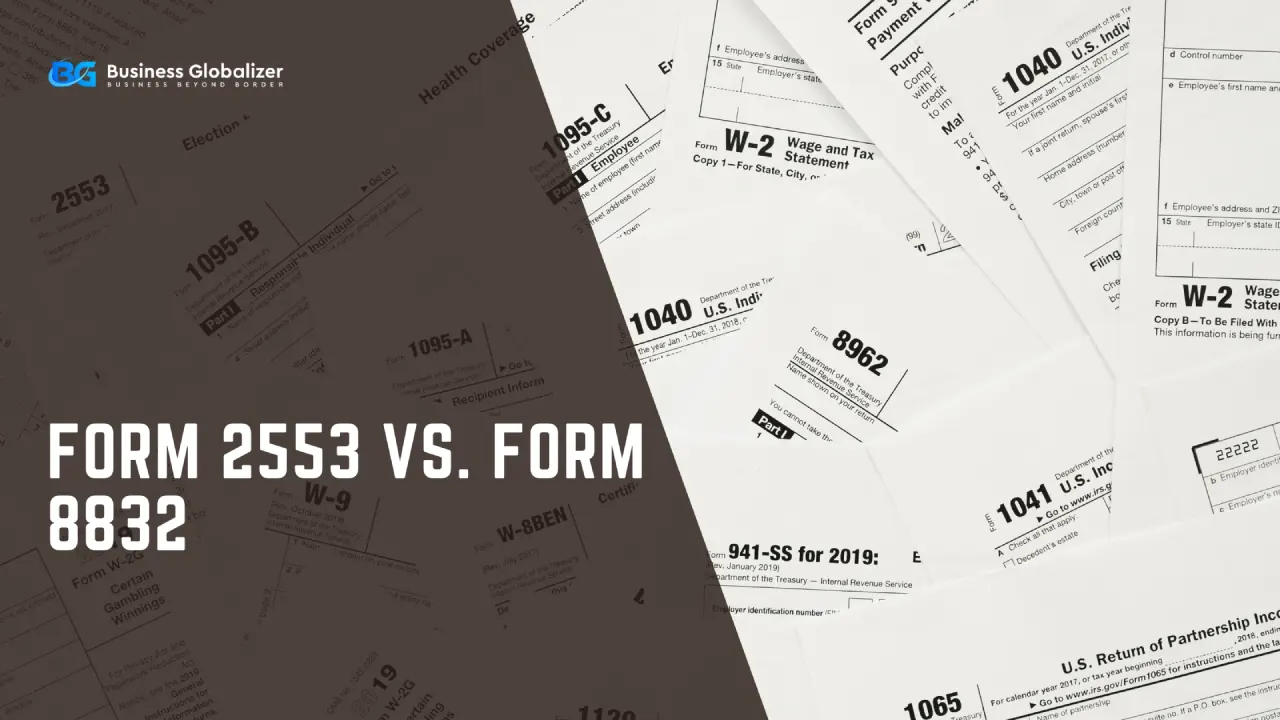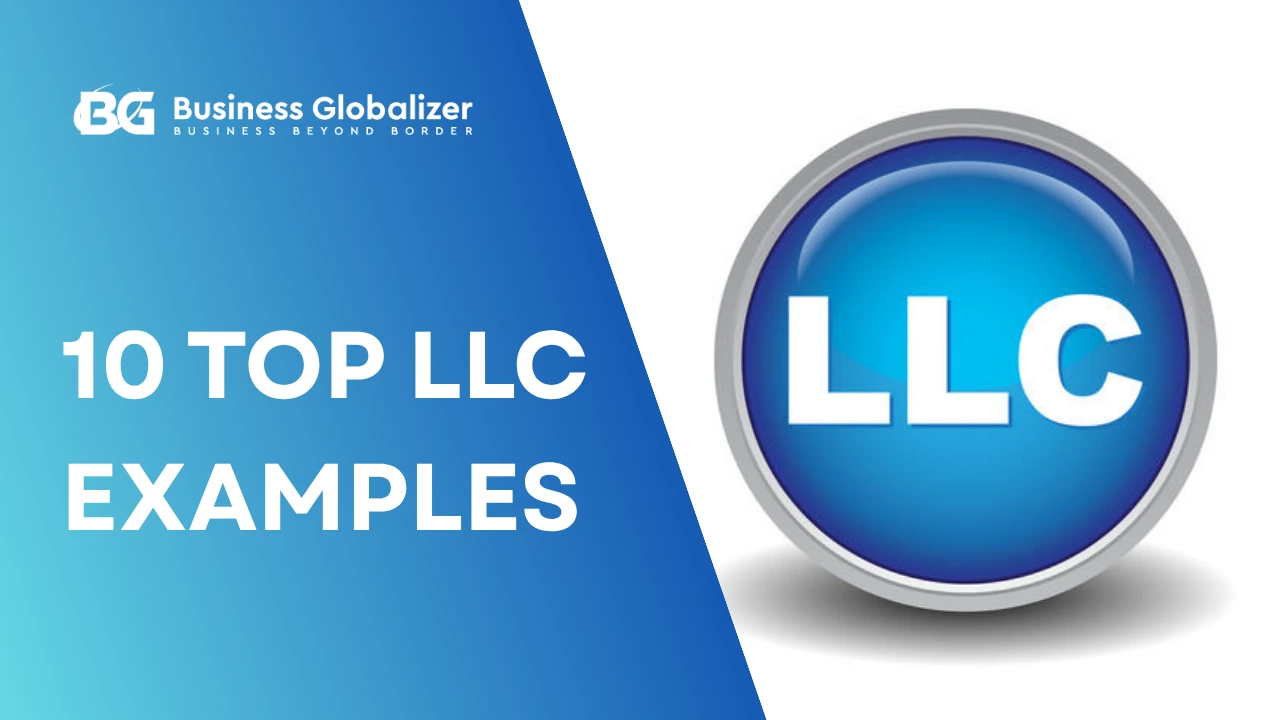Are you confused about the different types of IRS forms? Wondering why Form 2553 vs. 8832 is the title of this blog?
To speak frankly, IRS Forms are difficult to understand for ordinary business owners. But the good news is that you can get unlimited tax benefits for your company by filing these Forms.
In this blog, we will describe the details of Forms 8832 and 2553 and their differences. Read our discussion to avoid any mistakes and pick the right IRS form.
What Is IRS Form 2553?
Form 2553 is the IRS (Internal Revenue Service) tax form for S corporations. It is a tax form used in the US to submit taxes for eligible domestic corporations. LLCs and C corporations use Form 2553 to be taxed as S corporations. This is the IRS (Internal Revenue Service) tax form for business entities’ tax classification (establishing tax status for federal tax purposes).
Although Form 2553 does not apply to all business structures, filing this Form is a smart decision for some entities, especially LLCs and C corporations. They get the S corporation tax status and relevant tax benefits by choosing Form 2553.
What Is the Purpose of Form 2553?
By default, business entities are assigned a specific tax classification. For example, a single-member LLC’s default tax status is a sole proprietorship, which can only get some tax benefits. But if a single-member LLC wants to get the benefits of an S Corporation, it should file Form 2553.
The main purpose of filing Form 2553 is to get S corporation tax status – because S corporations provide certain benefits to eligible corporations (LLCs and C corporations).
- LLCs choose S corporations by filing Form 2553 to benefit from tax savings, tax deductions, and easy ownership transfers.
- C Corps chose S Corps by filing Form 2553 to benefit from avoiding double taxation and saving self-employment tax.
If you want to know Form 2553 instructions and how to file Form 2553, you can visit our blog.
What Is IRS Form 8832?
LLCs and C corporations use Form 8832 to be taxed as C corporations and partnerships. Form 8832 is the IRS (Internal Revenue Service) tax form for Entity Classification Election.
By filing Form 8832, LLCs and C corporations declare themselves as their desired classification (partnership, C corp) to the IRS and get unlimited tax benefits. Tax status changes via Form 8332 can save you thousands of dollars yearly in taxes.
What Is the Purpose of Form 8832?
Similar to Form 2553, the purpose of Form 8832 is to get the tax benefits of partnerships and C corporations. We know that a multi-member LLC is taxed as a partnership by default. But by filing Form 8832, a multi-member LLC can be taxed as a C corporation and get the C corporation benefits.
The purposes –
- LLCs choose C corporations by filing Form 8832 for tax savings and business growth.
- Corporations choose partnerships by filing Form 8832 to benefit from ownership flexibility while avoiding double taxation.
If you want to know Form 8832 instructions and how to file Form 8832, you can visit our blog.
What Are the Tax Classifications of Business Entities for Filing Form 8832 or Form 2553?
For your better understanding, we will easily explain to you what forms are necessary for changing specific business entities. The legal business entity types are-
- Sole proprietorship.
- Single-member LLC.
- Multi-member LLC.
- Corporation.
Now, these entities have their default tax classification. But you can change it according to your preferences by filing Form 2553 or 8832. Here are the differences in tax classification, divided by IRS forms.
- A sole proprietorship cannot change its tax status by filing Form 2553 or Form 8832. A sole proprietorship’s default status is a sole proprietorship.
Single-member LLCs’ default tax status is a sole proprietorship. But it can be changed to an S corporation by filing Form 2553. And by filing Form 8832, single-member LLCs can be taxed as C corporations.
Multi-member LLCs’ default tax status is a partnership. But to change the tax status to S corp or C corp, multi-member LLCs should file forms 2553 or 8832.
The corporation’s default tax is C corp. To change it to S corp, corporations should file Form 2553. And if you file Form 8832, you can be taxed as a partnership.
As a foreign entity or disregarded entity, you can file Form 2553 to be treated as an S corp. To get C corp status, you should file Form 8832.
Do I File Form 8832 or Form 2553: Which Would Be Better for Me?
The choice between Form 2553 and Form 8832 depends on several factors. Business companies choose one, considering their preferences for tax benefits and other facilities. Understanding Forms is tricky. If you need clarification about choosing the right Form, we are giving the differences between the two forms below. Take a look-
Eligible Entities and Conditions for Form 8832 or Form 2553
| Points | Form 2553 | Form 8832 |
|---|---|---|
| Disregarded Entity | Disregarded entities cannot file Form 2553 | Disregarded entities can file Form 8832 |
| Foreign entity | Can not file | Unable to file |
| Domestic Entity | Able to file Form 2553 | Able to file Form 8832 |
| Shareholder Limit | No more than 100 shareholders. | Shareholder limits are not necessary. |
| Shareholders Residency | Shareholders must be U.S. citizens | Shareholders do not need to be U.S. citizens |
Tax Implications for Form 8832 or Form 2553
| Tax Implications | Form 2553 | Form 8832 |
|---|---|---|
| Federal Tax | S corporations don’t need to pay federal income tax. | The federal tax depends on the chosen tax classification. |
| Double Taxation | It avoids double taxation at the entity level | Maybe subject to double taxation for corporations |
| Self-Employment Tax | Potential reduction for active S Corporation shareholders | Determined by chosen tax classification |
| Entity Level | No federal income tax | It may be subject to corporate-level tax |
| Shareholder Level | Income, deductions, and tax liabilities that pass through to individual shareholders | Shareholders report income based on tax classification |
Filing Requirements for Form 8832 or Form 2553
| Points | Form 2553 | Form 8832 |
|---|---|---|
| Company Eligibility | The company should be eligible according to Form 2553 requirements. | The company should be eligible according to Form 8832 requirements. |
| Shareholder Eligibility | Shareholder eligibility is necessary, according to Form 2553. | It’s not necessary. |
| Company Information | Business information is necessary to submit. | Business information is necessary to submit. |
| Authorized Signature | An authorized Signature is required from all members of the company. | An authorized person’s signature on behalf of your company |
Election Deadline for Form 8832 or Form 2553
| Points | Form 2553 | Form 8832 |
|---|---|---|
| Initial Filing | Within two months and 15 days of the beginning of the tax year. | Up to 75 days before you file the form and Up to one year after you file the form. |
| Late Filing | Within 3 years and 75 days of the requested effective date. | IRS will provide a date after granting the late election relief |
FAQs
Q1: Can I file forms 8832 and 2553 together?
Answer: Yes, You can file both forms together in some situations. At your company’s benefit, you can file both forms at the same time; here’s how:
LLCs file Form 8832 to be classified as corporations.
After that, corporations can file Form 2553 to elect S corp status.
But remember, both forms have specific requirements and deadlines, so be careful while submitting.
Q2: Where should I file form 8832 and form 2553?
Answer: To change your tax classification, you should file your Forms with the IRS, not the state.
Q3: Can I revert back from C Corp to default tax status?
Answer: Yes, you can. Once you change your tax status from LLC to C corporation by filing Form 8832, you can revert to your default tax status, but you must face some tax consequences.
Q4: Can I revert from S Corp to default tax status?
Answer: Yes. LLCs use Form 2553 to elect their tax status as S corporations. If you want to return to your default tax classification, like Sole proprietorship or partnership, you should file Form 2553.
Bottomline
We see that both IRS Forms are necessary in different circumstances. Now you know the details about Form 2553 vs. 8832. So it would be easy for you to file your specific forms.
But if you face any confusion, you can contact us. We can consult you to select the proper IRS form according to your business conditions. Also, we can provide you with the best services without any hassle for tax preparation.






